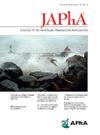“Counting what we save—and what we never have to spend: Cost savings and cost avoidance from an AI-enabled pharmacy workflow”
IF 2.5
4区 医学
Q3 PHARMACOLOGY & PHARMACY
Journal of the American Pharmacists Association
Pub Date : 2025-08-07
DOI:10.1016/j.japh.2025.102899
引用次数: 0
Abstract
Background
Clinical trial protocols are highly complex documents that outline the objectives, design, methodology, statistical considerations, and operational details of a study. Departments, such as nursing, pharmacy, and labs, create tailored summaries that allow others in their field to efficiently access information without combing through hundreds of pages of a protocol. Creating these summaries can be time intensive and are a barrier to study activation. With increasing complexity of study design and momentum towards individualized medicine, artificial intelligence (AI)-assisted workflows may present an opportunity to increase efficiency and reduce study overhead.
Objectives
Determine the impact of AI-assisted workflows in preparing pharmacy clinical trial documents.
Methods
A generative AI prompt was developed to produce summaries which include elements of manually created summaries. Pharmacists completed summaries manually and with AI assistance in parallel. Studies were selected sequentially, with all new trials submitted within the stated observation timeframe considered for assessment. Time required to complete summaries was compared between manual and AI-assisted methods, and a cost-effectiveness and cost-avoidance analysis was performed.
Results
An AI-assisted workflow cut pharmacy summary-sheet preparation time 80% (148 → 30 minutes), yielding a negative incremental cost-effectiveness ratio (ICER) of −$97 per hour saved and a net monetary benefit (NMB) of $423 per task (∼$30,000 annually for six pharmacists). One-way sensitivity analyses across productivity, salary, fringe, and IT overhead ranges all stayed cost-saving; the worst case still delivered a NMB of $465. A 10-year Monte-Carlo analysis varying AI price growth, performance drift, upgrade shocks, and labor inflation never crossed break-even (mean discounted NMB $294 k, (95% CI $265–323 k).
Conclusion
AI automation reliably frees pharmacist time, curbs costs, and scales favorably as trial volume grows across diverse settings and future documentation-intensive pharmacy tasks.
This study evaluates the cost-effectiveness of implementing an AI-assisted workflow for pharmacy summary sheet creation in clinical trials. We compare the AI workflow to a traditional manual process, analyzing labor costs, time efficiency, ICER, and NMB. Findings indicate significant cost savings and efficiency gains, supporting the adoption of AI-driven automation.
“计算我们节省的费用和我们永远不会花费的费用:人工智能药房工作流程的成本节约和成本避免”。
背景:临床试验方案是高度复杂的文件,概述了研究的目标、设计、方法、统计考虑和操作细节。护理、药房和实验室等部门创建了定制的摘要,使该领域的其他人能够有效地访问信息,而无需梳理数百页的协议。创建这些摘要可能会耗费大量时间,并且是学习激活的障碍。随着研究设计的日益复杂和个性化医疗的发展,人工智能辅助工作流程可能提供提高效率和减少研究开销的机会。目的:确定人工智能辅助工作流程对制备药学临床试验文件的影响。方法:开发了一个生成式人工智能提示来生成包含手动创建摘要元素的摘要。药剂师在人工智能辅助下手动完成总结。研究是按顺序选择的,所有在规定的观察时间框架内提交的新试验都被考虑进行评估。比较人工和人工智能辅助方法完成总结所需的时间,并进行成本效益和成本避免分析。结果:人工智能辅助工作流程将药房总结表准备时间缩短了80%(148→30分钟),产生负增量成本效益比(ICER),每小时节省- 97美元,每项任务的净货币效益(NMB)为423美元(6名药剂师每年约30,000美元)。对生产率、工资、附加福利和IT开销范围的单向敏感性分析都保持了成本节约;在最坏的情况下,NMB仍然是465美元。一项为期10年的蒙特卡洛分析显示,人工智能价格增长、性能漂移、升级冲击和劳动力通胀从未超过收支平衡(平均折扣NMB为29.4万美元,95% CI为265-323万美元)。结论:人工智能自动化可靠地节省了药剂师的时间,降低了成本,并且随着试验量在不同设置和未来文档密集型药房任务中的增长而有利地扩展。本研究评估了在临床试验中实施人工智能辅助药房总结表创建工作流程的成本效益。我们将人工智能工作流程与传统的人工流程进行了比较,分析了人工成本、时间效率、增量成本效益比(ICER)和净货币效益(NMB)。研究结果表明,显著的成本节约和效率提高,支持采用人工智能驱动的自动化。
本文章由计算机程序翻译,如有差异,请以英文原文为准。
求助全文
约1分钟内获得全文
求助全文
来源期刊
CiteScore
3.30
自引率
14.30%
发文量
336
审稿时长
46 days
期刊介绍:
The Journal of the American Pharmacists Association is the official peer-reviewed journal of the American Pharmacists Association (APhA), providing information on pharmaceutical care, drug therapy, diseases and other health issues, trends in pharmacy practice and therapeutics, informed opinion, and original research. JAPhA publishes original research, reviews, experiences, and opinion articles that link science to contemporary pharmacy practice to improve patient care.

 求助内容:
求助内容: 应助结果提醒方式:
应助结果提醒方式:


